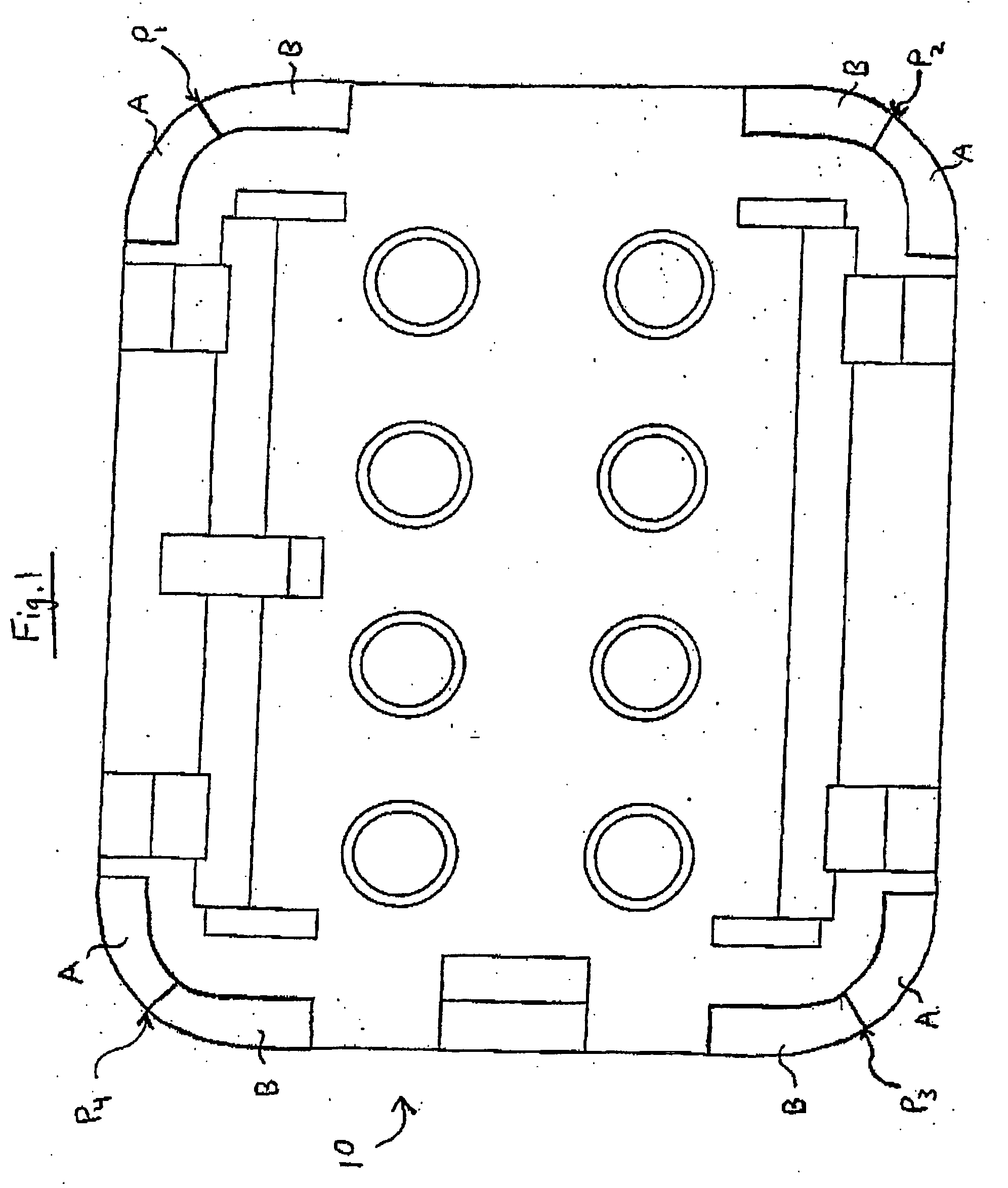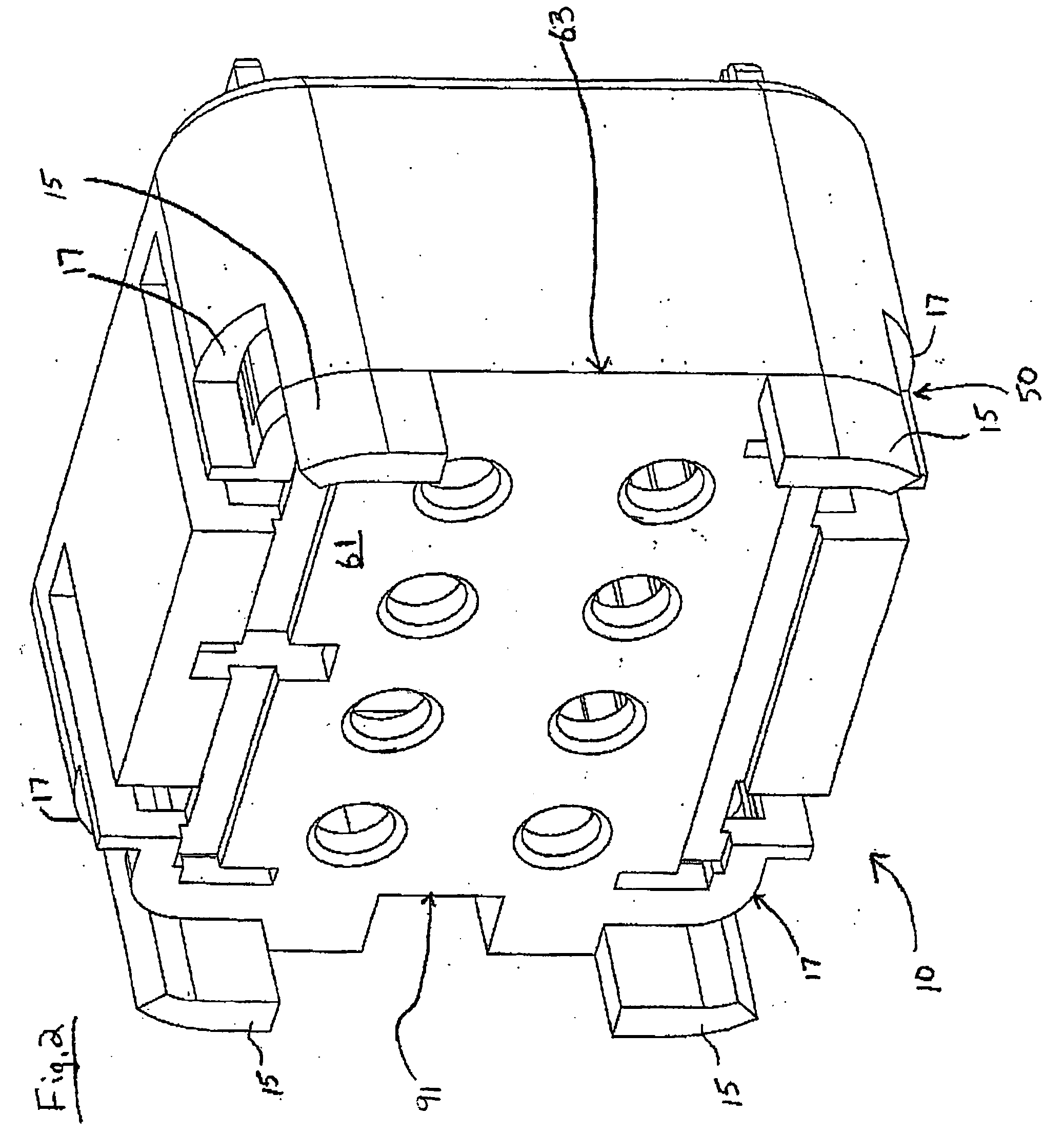Terminal position assurance with forward interlocking face keying
a technology of forward interlocking face and position assurance, which is applied in the direction of coupling contact members, coupling device connections, securing/insulating coupling contact members, etc., can solve the problems of difficult, if not impossible, to determine if the corresponding connectors are fully engaged, and the connector components are engaged
- Summary
- Abstract
- Description
- Claims
- Application Information
AI Technical Summary
Benefits of technology
Problems solved by technology
Method used
Image
Examples
Embodiment Construction
[0024] As previously mentioned, there is a need for a novel fixed terminal position assurance mechanism embodied with a forward interlocking face keying mechanism, which allows for multiple configurations (robust design), is a stronger design, and prevents damage to internal assembly components during periods of vibration of the assemblies, and which requires less tooling and parts involved to effectuate a proper electrical connector housing assembly. Embodiments of the present invention provide a fixed terminal position assurance mechanism operable in an electrical connector assembly, which provides increased assembly strength and allows for multiple configurations in the design of the assemblies, while simultaneously reducing the amount of tooling involved in the production of the housing assemblies. Additionally, the present invention provides terminal position assurance mechanisms that may also prevent improper mating of connectors.
[0025] Referring now to the drawings, and more...
PUM
 Login to View More
Login to View More Abstract
Description
Claims
Application Information
 Login to View More
Login to View More - R&D
- Intellectual Property
- Life Sciences
- Materials
- Tech Scout
- Unparalleled Data Quality
- Higher Quality Content
- 60% Fewer Hallucinations
Browse by: Latest US Patents, China's latest patents, Technical Efficacy Thesaurus, Application Domain, Technology Topic, Popular Technical Reports.
© 2025 PatSnap. All rights reserved.Legal|Privacy policy|Modern Slavery Act Transparency Statement|Sitemap|About US| Contact US: help@patsnap.com



